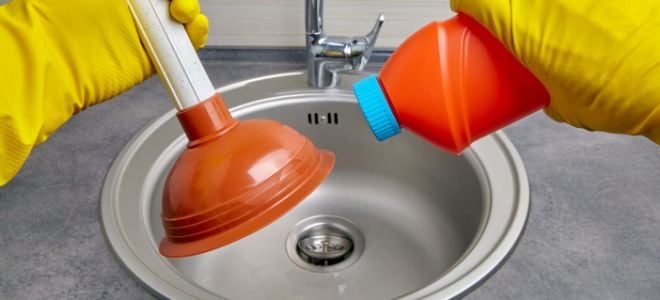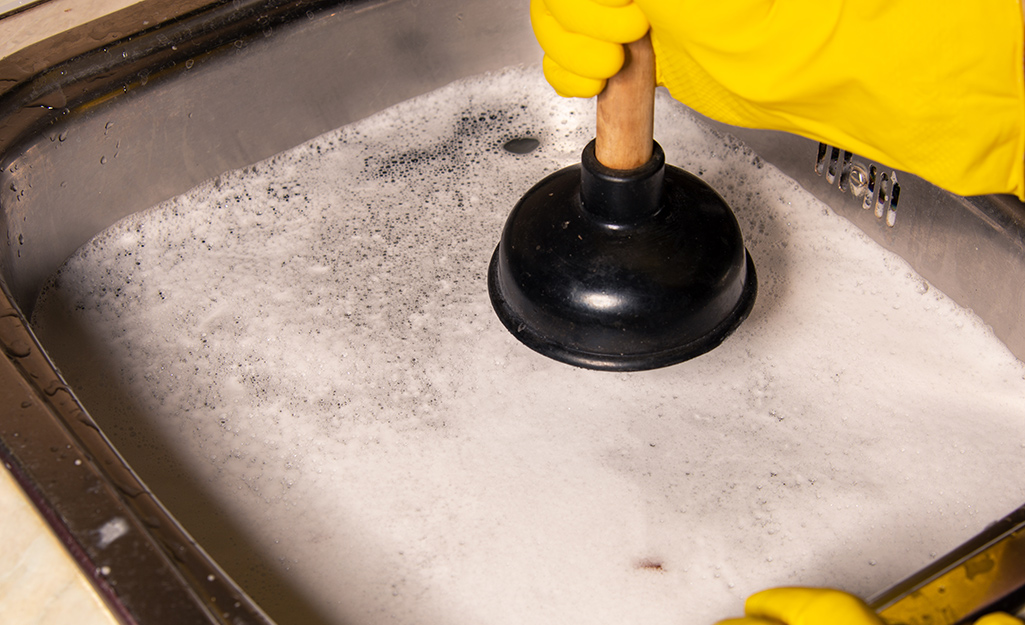Master Plungers and Drain Cleaner Techniques: Specialist Guidance
Master Plungers and Drain Cleaner Techniques: Specialist Guidance
Blog Article
What are your concepts on How to Use a Plunger to Unclog a Toilet or Drain?

Introduction
Appropriate upkeep of household drains pipes is necessary for stopping clogs and making certain smooth water circulation. One of the key devices in every property owner's toolkit is the bettor, along with various drain cleaners made to take on persistent clogs effectively. This short article checks out exactly how to utilize bettors and drain cleaners efficiently to keep your drains flowing freely.
Section 1: Understanding Plungers
Sorts of Plungers
There are numerous kinds of plungers available, each made for various kinds of drains and obstructs. One of the most common kinds consist of cup bettors, flange plungers, and accordion bettors.
Exactly How Plungers Work
Plungers work on the principle of developing stress and suction to remove blockages. When correctly applied over a drainpipe, they produce a vacuum that can take out particles or break up clogs.
Selecting the Right Plunger
Picking the ideal plunger depends upon the sort of drainpipe and the nature of the clog. Mug plungers are suitable for sinks and bathtubs, while flange plungers are better suited for bathrooms due to their style.
Common Errors with Plungers
Staying clear of these errors guarantees reliable plunging: incorrect seal around the drainpipe, insufficient pressure, and unclear surrounding debris.
Area 2: Using Plungers Successfully
Preparation
Before plunging, guarantee the bettor covers the drainpipe entirely and creates a tight seal. Clear any type of visible particles around the drainpipe opening.
Technique
Start with mild plunging motions to construct suction. Boost pressure progressively, utilizing a steady rhythm. Repeat as essential up until the drainpipe removes.
Troubleshooting Tips
If diving doesn't work, attempt changing the seal, using petroleum jelly for a far better seal, or utilizing a different type of bettor.
Section 3: Understanding Drainpipe Cleansers
Types of Drainpipe Cleansers
Drain cleansers can be chemical or enzymatic. Chemical cleansers make use of solid chemicals to liquify blockages, while chemical cleaners utilize natural enzymes to break down raw material.
How Drain Cleansers Job
Chemical cleansers respond with clogs to liquify them, while chemical cleaners break down natural products like hair and oil without harming pipes.
Safety and security Factors to consider
Constantly put on handwear covers and eye defense when making use of chemical drainpipe cleaners. Make sure appropriate ventilation and follow manufacturer guidelines meticulously.
Eco-Friendly Alternatives
Take into consideration making use of vinegar and baking soft drink or enzyme-based cleansers for environment-friendly options that are more secure for pipes and the setting.
Section 4: Using Drainpipe Cleaners Successfully
Application Techniques
Put chemical cleansers directly right into the drain opening. Enable them to benefit the recommended time before flushing with warm water. Chemical cleaners should rest over night.
Safety measures
Avoid blending different sorts of cleansers, as this can produce poisonous fumes. Never utilize chemical cleaners in conjunction with a bettor, as splashing can happen.
Taking Care Of Persistent Blockages
For persistent clogs, consider using a pipes serpent or calling a professional plumber to prevent damage to pipes.
Verdict
In conclusion, comprehending exactly how to use plungers and drain cleansers properly is essential for keeping healthy and balanced plumbing systems. By choosing the right devices and techniques, homeowners can deal with minor clogs and protect against major plumbing problems down the line.
How To Properly Use A Plumbing Snake To Clear Drains
When any drain clogs in our home arise, we tend to gravitate toward the plunger and little else. In cases where the plunger and its vacuum-created pressure are not able to clear clogs, many immediately move to harmful chemicals or simply call their plumber to fix the issue.
we’re happy to help with all drain cleaning needs and concerns. This includes informing you on a few other home remedies you may have at your disposal for minor to moderate clogs, one of which is the use of a plumbing snake. Many people have never used one of these before – let’s go over the steps to take when your drain clogs and you have a plumbing snake available.
Attempt Plunger Use
The first step here, as we noted above, should indeed be to grab your plunger when you notice a drain clog and attempt to resolve it this way. If you’re unsure how to use a particular type of plunger, our plumbers can answer any questions you have. If this doesn’t do the trick, however, you move on to the snake.
Locate And Prepare Snake
A plumbing snake is a metal or plastic device that’s generally about a quarter of an inch thick. It’s design with significant extensions, meant to reach down into your clogged drain and push the clog out. Snakes also contain drain augers that will latch onto and push stubborn blockages.
If your plunger doesn’t clear a clog, locate your snake and bring it to the drain in question. We also recommend keeping a bucket nearby to collect the clog once you pull it out, plus we’d advise wearing goggles and possibly protective gloves.
Feed Snake
Once you’re ready to go, feed the snake slowly down the drain, using the crank device it comes with to keep it moving until it finds the clog. Once this happens, much of the clog will be latched onto the coil so you can pull it out, while the rest will simply break up and flow downward.
Detach Debris
Remove the snake slowly from the drain, and once you’ve done so, pick off any debris that’s stuck to the coil. This is another area where wearing gloves is a must.
Flush Drain
Finally, take a few minutes to ensure the snake has done its job correctly. If you’ve been using it on a toilet, flush the toilet a couple times and make sure everything flows well. If you’ve used it on a different drain, flush it with some room temperature water.
https://www.mybuddytheplumber.com/blog/how-to-properly-use-a-plumbing-snake-to-clear-drains/

Application Techniques
Put chemical cleansers directly right into the drain opening. Enable them to benefit the recommended time before flushing with warm water. Chemical cleaners should rest over night.
Safety measures
Avoid blending different sorts of cleansers, as this can produce poisonous fumes. Never utilize chemical cleaners in conjunction with a bettor, as splashing can happen.
Taking Care Of Persistent Blockages
For persistent clogs, consider using a pipes serpent or calling a professional plumber to prevent damage to pipes.
Verdict
In conclusion, comprehending exactly how to use plungers and drain cleansers properly is essential for keeping healthy and balanced plumbing systems. By choosing the right devices and techniques, homeowners can deal with minor clogs and protect against major plumbing problems down the line.
How To Properly Use A Plumbing Snake To Clear Drains
When any drain clogs in our home arise, we tend to gravitate toward the plunger and little else. In cases where the plunger and its vacuum-created pressure are not able to clear clogs, many immediately move to harmful chemicals or simply call their plumber to fix the issue.
we’re happy to help with all drain cleaning needs and concerns. This includes informing you on a few other home remedies you may have at your disposal for minor to moderate clogs, one of which is the use of a plumbing snake. Many people have never used one of these before – let’s go over the steps to take when your drain clogs and you have a plumbing snake available.
Attempt Plunger Use
The first step here, as we noted above, should indeed be to grab your plunger when you notice a drain clog and attempt to resolve it this way. If you’re unsure how to use a particular type of plunger, our plumbers can answer any questions you have. If this doesn’t do the trick, however, you move on to the snake.
Locate And Prepare Snake
A plumbing snake is a metal or plastic device that’s generally about a quarter of an inch thick. It’s design with significant extensions, meant to reach down into your clogged drain and push the clog out. Snakes also contain drain augers that will latch onto and push stubborn blockages.
If your plunger doesn’t clear a clog, locate your snake and bring it to the drain in question. We also recommend keeping a bucket nearby to collect the clog once you pull it out, plus we’d advise wearing goggles and possibly protective gloves.
Feed Snake
Once you’re ready to go, feed the snake slowly down the drain, using the crank device it comes with to keep it moving until it finds the clog. Once this happens, much of the clog will be latched onto the coil so you can pull it out, while the rest will simply break up and flow downward.
Detach Debris
Remove the snake slowly from the drain, and once you’ve done so, pick off any debris that’s stuck to the coil. This is another area where wearing gloves is a must.
Flush Drain
Finally, take a few minutes to ensure the snake has done its job correctly. If you’ve been using it on a toilet, flush the toilet a couple times and make sure everything flows well. If you’ve used it on a different drain, flush it with some room temperature water.
https://www.mybuddytheplumber.com/blog/how-to-properly-use-a-plumbing-snake-to-clear-drains/

I'm just very intrigued by and I hope you enjoyed reading the entire entry. I beg you take a moment to promote this blog post if you appreciated it. Thanks so much for your time spent reading it.
Schedule Today! Report this page